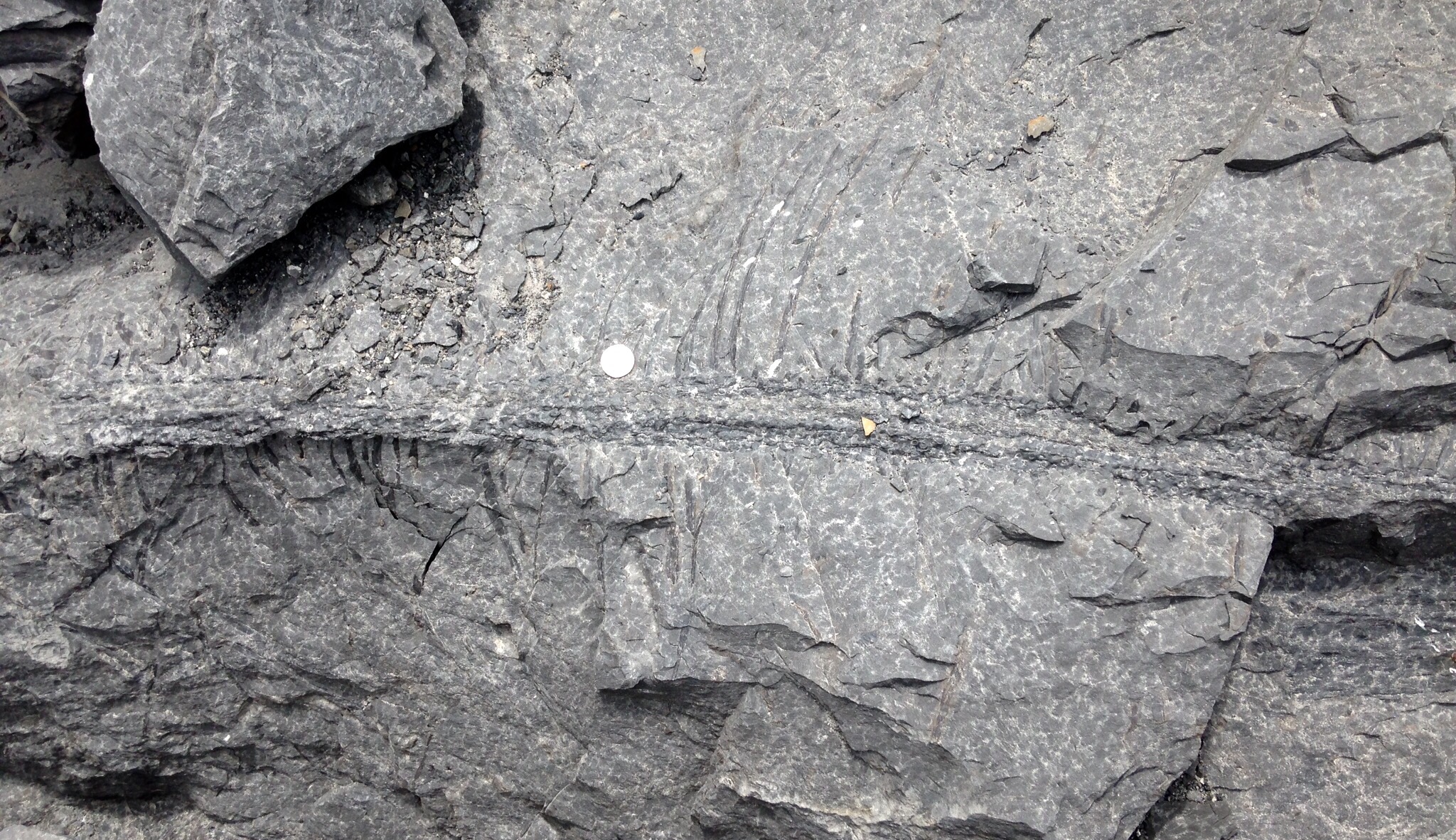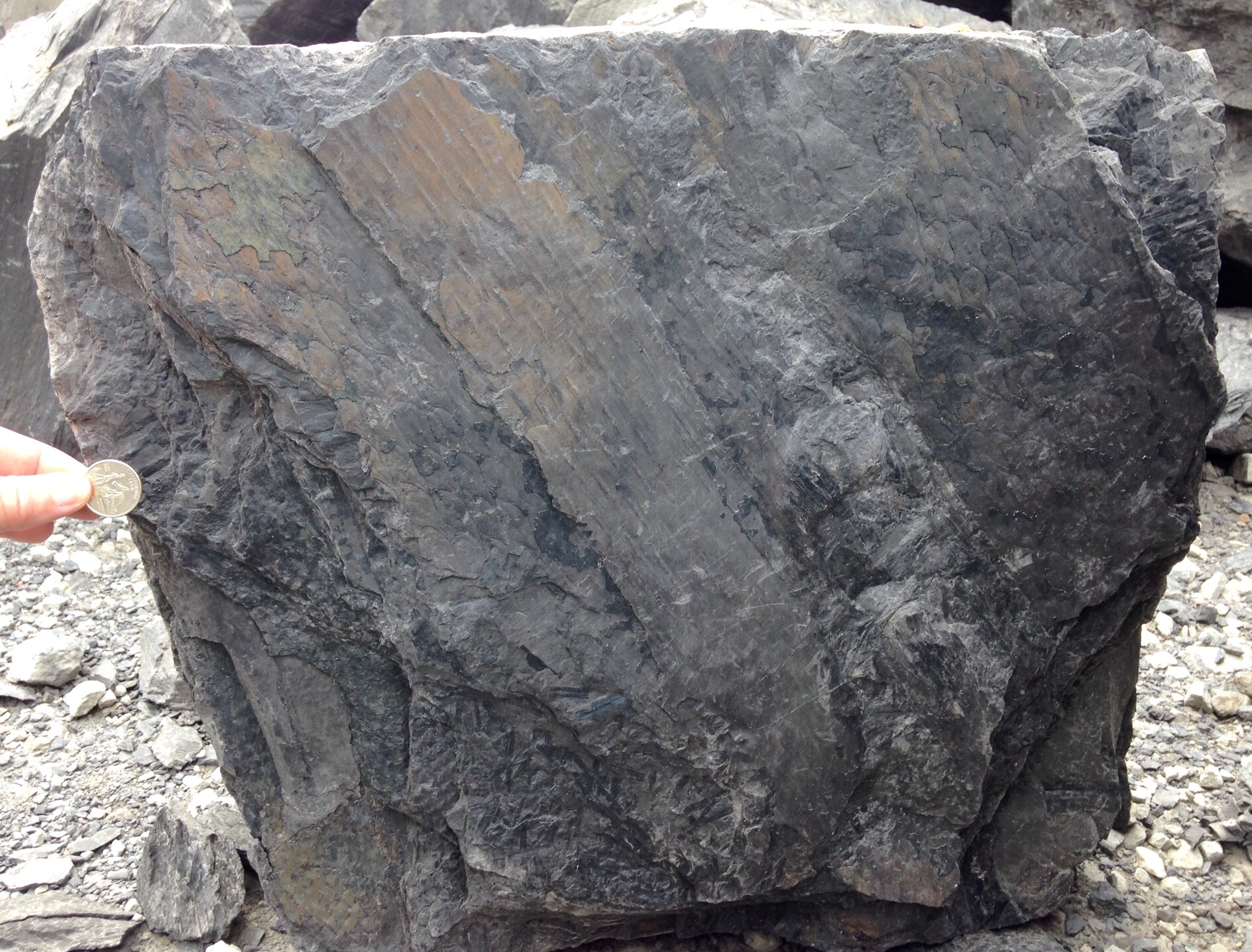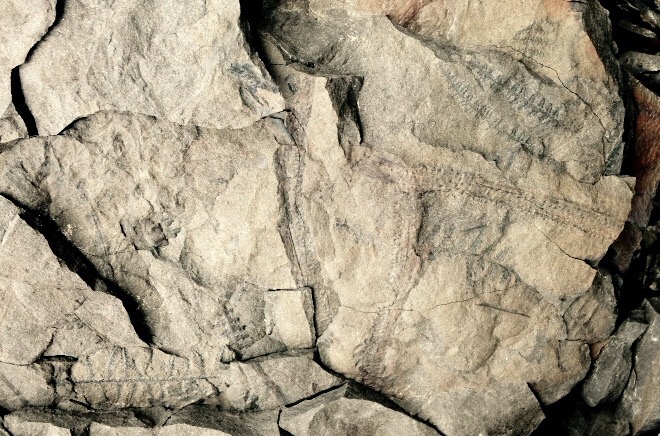 Last week I made a short trip back to Virginia for my son's graduation from Patrick Henry Community College. This also was a perfect opportunity for some fossil collecting, so Brett, Tim, and I met DorothyBelle Poli and Lisa Stoneman from Roanoke College for a day trip to Beckley, West Virginia.Boxley Materials operates a quarry near Beckley that cuts through the Carboniferous (~ 318 million-year-old) New River Formation. Certain beds of the New River Formation are full of fossil plants, and Boxley set aside some of this material for us to examine. Like many Carboniferous forests, one of the most prominent types of plants in these deposits is giant lycopods. Above is an example of Stigmaria, part of the root system of these lycopods (because it's rare to find all the parts of a plant in a single fossil, different fossil plant structures often have different scientific names). Unfortunately, this Stigmaria was in a rock that was far too large for us to collect.Giant lycopods are sometimes called "scale trees" because of the geometric (often diamond-shaped) leaf scars on their trunks:
Last week I made a short trip back to Virginia for my son's graduation from Patrick Henry Community College. This also was a perfect opportunity for some fossil collecting, so Brett, Tim, and I met DorothyBelle Poli and Lisa Stoneman from Roanoke College for a day trip to Beckley, West Virginia.Boxley Materials operates a quarry near Beckley that cuts through the Carboniferous (~ 318 million-year-old) New River Formation. Certain beds of the New River Formation are full of fossil plants, and Boxley set aside some of this material for us to examine. Like many Carboniferous forests, one of the most prominent types of plants in these deposits is giant lycopods. Above is an example of Stigmaria, part of the root system of these lycopods (because it's rare to find all the parts of a plant in a single fossil, different fossil plant structures often have different scientific names). Unfortunately, this Stigmaria was in a rock that was far too large for us to collect.Giant lycopods are sometimes called "scale trees" because of the geometric (often diamond-shaped) leaf scars on their trunks: Seed ferns are also widespread in Carboniferous deposits; there are several different species in this sample:
Seed ferns are also widespread in Carboniferous deposits; there are several different species in this sample: We are able to collect several good specimens for the Western Science Center, which will be nice additions to our growing paleobotany collection.
We are able to collect several good specimens for the Western Science Center, which will be nice additions to our growing paleobotany collection.
